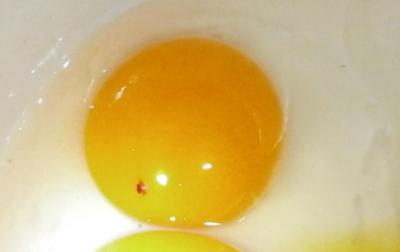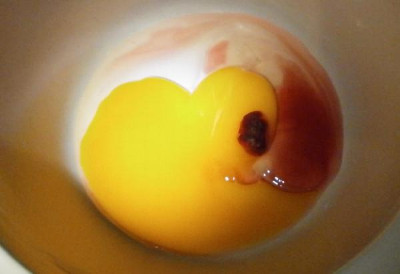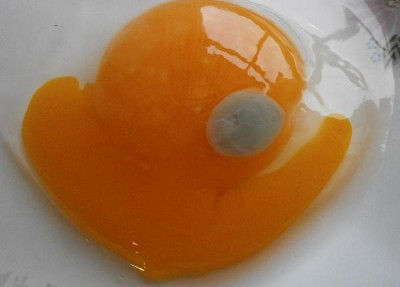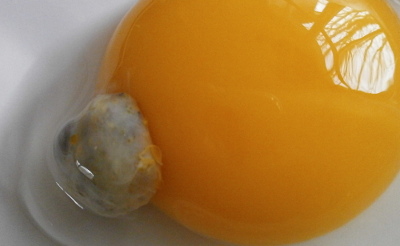Once Again on the Internal Defects of Eggs
Motivated by an earlier post, I decided to investigate what are some of the possible reasons why some eggs contain blood spots or small pieces of meat-like stuff. I was wondering if I should do something to prevent such eggs being laid. Because only one of our ducks is laying at the moment, it is a good moment for making plans and creating hypotheses.
The biggest risk that comes along with eggs containing blood or other stuff is that if some of those eggs end up in the customers’ kitchens, we may do lots of harm to the popularity of duck eggs. While duck eggs are nutritious and taste good, they are also expensive and not very popular. I wouldn’t want to cause any loss to ourselves and other people who raise ducks – I would rather like to see duck eggs more widely available and I would like more people to discover them.
Another risk is that of contamination and explosion during incubation.
Some Types of Internal Defects of Eggs
Broadly speaking, I have seen four types of internal defects, of which two look like blood and two look more like meat tissue. The first three photos were taken in the September of 2015, while the fourth one was already shown in the earlier post mentioned above.
A small blood spot:

A large “something” of blood:

A small piece of meat-like tissue:

A large piece of meat-like tissue:

The amount of information available on duck eggs is relatively small so sooner or later you end up reading about chicken eggs. The life cycle of eggs is quite the same for both ducks and chickens though, so it’s OK.
As it turns out, the blood is, well, blood, and the meat-like tissue is, well, mostly tissue. For instance, there are those nice explanations:
- http://www.thepoultrysite.com/publications/1/egg-quality-handbook/28/blood-spots/
- http://www.thepoultrysite.com/publications/1/optimum-egg-quality-a-practical-approach/29/meat-spots/
As to the possible reasons, what I can relate to are some disturbances (predator birds), some accidental changes in our lighting scheme (a power outage now and then and some failing electronics in the duckhouse) and the aging of our birds. Our first ducks will turn three years old in a month.
I don’t think the defects are a result of blood but I can’t be sure. The feeding ration of our ducks is about 2/3 layers’ (chickens’) pellets and 1/3 wheat; in the summer they forage all kinds of additional flora and fauna in the garden.
What I may also suspect especially with the blood spots is the large number of young drakes we had this summer and autumn. Too much physical pressure?
Plans for the Next Laying Season
- For the sake of statistics, it would be a good idea to take pictures of the shells of eggs that contain spots. Maybe there are only a couple of birds laying such eggs sometimes – or maybe many of them lay such an egg, very seldom?
- We must certainly continue candling each egg we sell. In addition, we should candle all the eggs we consume ourselves – thus we will be able to get an idea of whether we actually notice most of the spots and pieces during candling. I’m quite sure I don’t notice all of them.
- We will try and persuade our more frequent customers to let us know if they find anything in eggs. So far, only my mother has reported on such findings.
- We are planning to lower the average age of our flock. While we let too many drakes grow into adulthood this year (they are all gone now, sold or eaten), we are planning to cull at least some male ducklings at the age of a day next year; at the same time we are planning to do more rounds of incubation and aim for a result of 10 new young female runners.